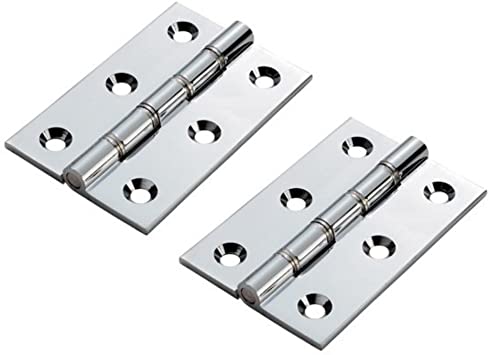
In simple terms, a hinge is a mechanical bearing that connects two solid objects. It generally permits a fixed angle of rotation. Many types of hinges are available for a variety of applications. This article will discuss the different types and their cost-effectiveness. It will also give a brief overview of their uses. Ultimately, this article will help you choose the most appropriate hinge for your needs.
Basic Components of a Hinge
A hinge has many different types of components. One type is the weld-on barrel hinge. It has a cylindrical female barrel portion and two male barrel portions. The cylindrical female barrel portion has an axial bore and is welded to the first item. The male barrel portions have a cylindrical main body portion and a pin extension that rotatably receives within the axial bore of the female barrel portion. The locking tongue or flange extends from the main body to an enlarged portion that extends into the shaft tube.
Leafs and knuckles form the hinge's central tube. They are also known as nodes and loops. Unlike other hinge parts, the knuckle is not a standalone component. It forms the joint between the leaves and interlocks with the pin. These components work together to secure the hinge. Each leaf has a hollow tube in the centre that contains a pin. The pin is inserted into the centre of the knuckle.

Types of Hinges
The material used to make Hinges varies, depending on the application and its environment. While brass hinges are generally the most attractive, you can also find a steel or stainless-steel hinges. Stainless steel hinges are resistant to rust and do not take to coating materials. You can also find hidden hinges made of stainless steel. There are several other types of hinges as well, and the type you choose should depend on its purpose.
A swing clear hinge is a special type of door hinge that is generally used for ADA swing doors. It is designed to swing completely clear of the door frame when opened, creating a wider opening for maximum access. Special types of hinges are also available for emergency exit doors, as well as for security applications. The best type of hinge for your application depends on several factors, including the weight of the door, how often it will be used, and the environment in which it is used.

Cost-effectiveness of Hinge Materials
When choosing the materials used for hinges, it is important to consider the applications and costs of different types of metals. One of the most used metals is steel, which is a combination of iron and carbon. Steel can also be alloyed with other metals, such as chromium and nickel. Stainless steel is also corrosion-resistant, making it an ideal material for hinges that are exposed to corrosive substances and moisture.
A plastic hinge can be made of polypropylene, polyethene, or glass fibre. These materials will increase the hinge's tensile strength and metallic appearance, but they will decrease the longevity of the living hinge. While plastics degrade when exposed to UV light, some can withstand prolonged UV exposure without experiencing degradation. For this reason, it is important to carefully consider the environmental impact of different hinge materials. Here are some tips for choosing the best materials for hinges.

Applications of Hinges
Hinges are used in all kinds of situations to connect two objects and enable them to rotate and move. They serve in countless applications, from mundane items to space exploration vehicles. Depending on their purpose and materials, hinges can be shaped and sized to suit the needs of the application. This article will discuss the many applications of hinges and the different types of hinges used in each. We will also look at the benefits of each type of hinge.
The material for hinges is usually made of steel, which contains iron and carbon. There are two types of steel: traditional steel and stainless steel. Traditional steel is characterized by its absence of chromium, which makes it vulnerable to corrosion and rust. In contrast, stainless steel is more resistant to rust and is also stronger than traditional steel. For this reason, the former is often preferred by manufacturers because of its higher cost. Although both types of steel have their advantages, the latter is more expensive and labour-intensive.




























